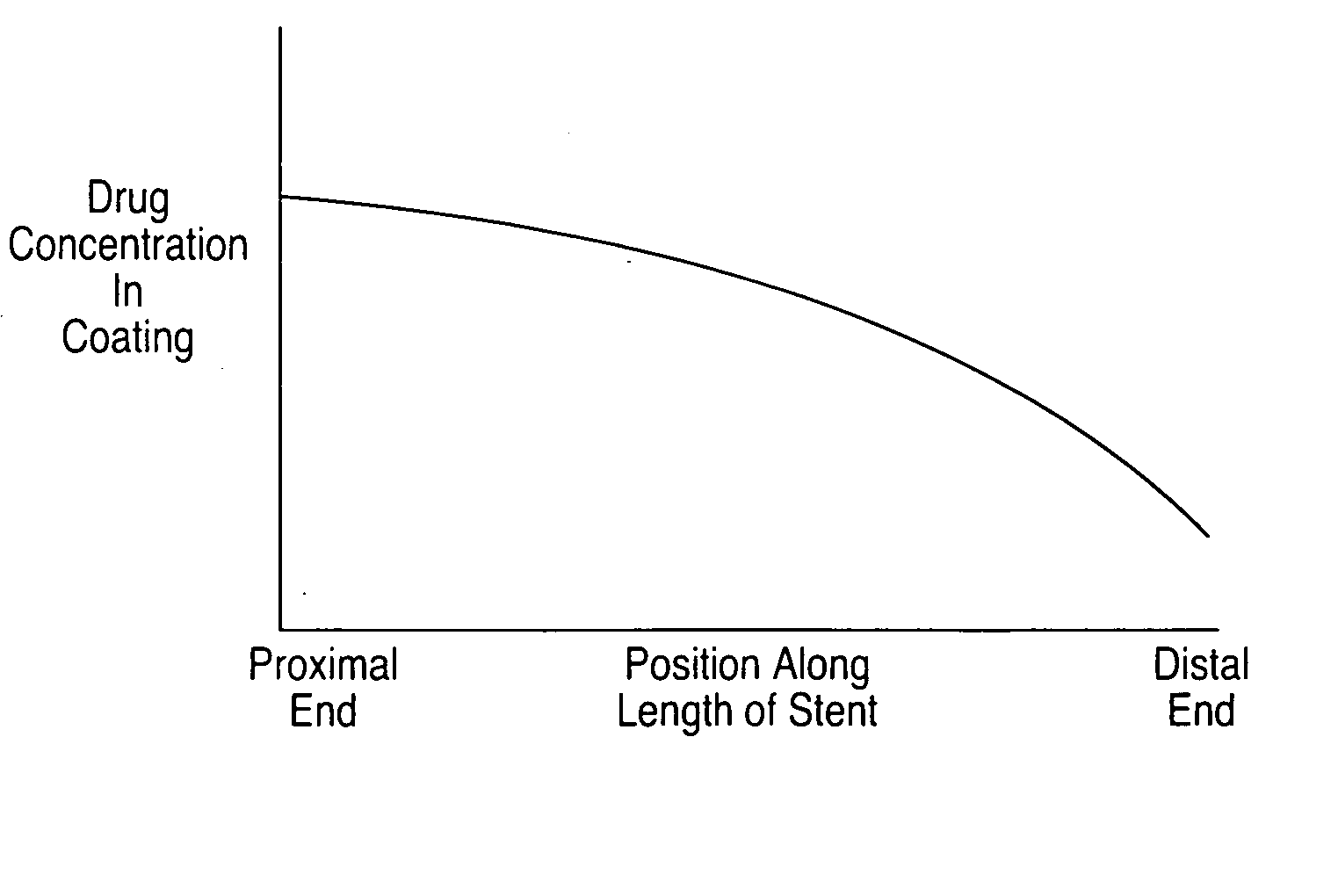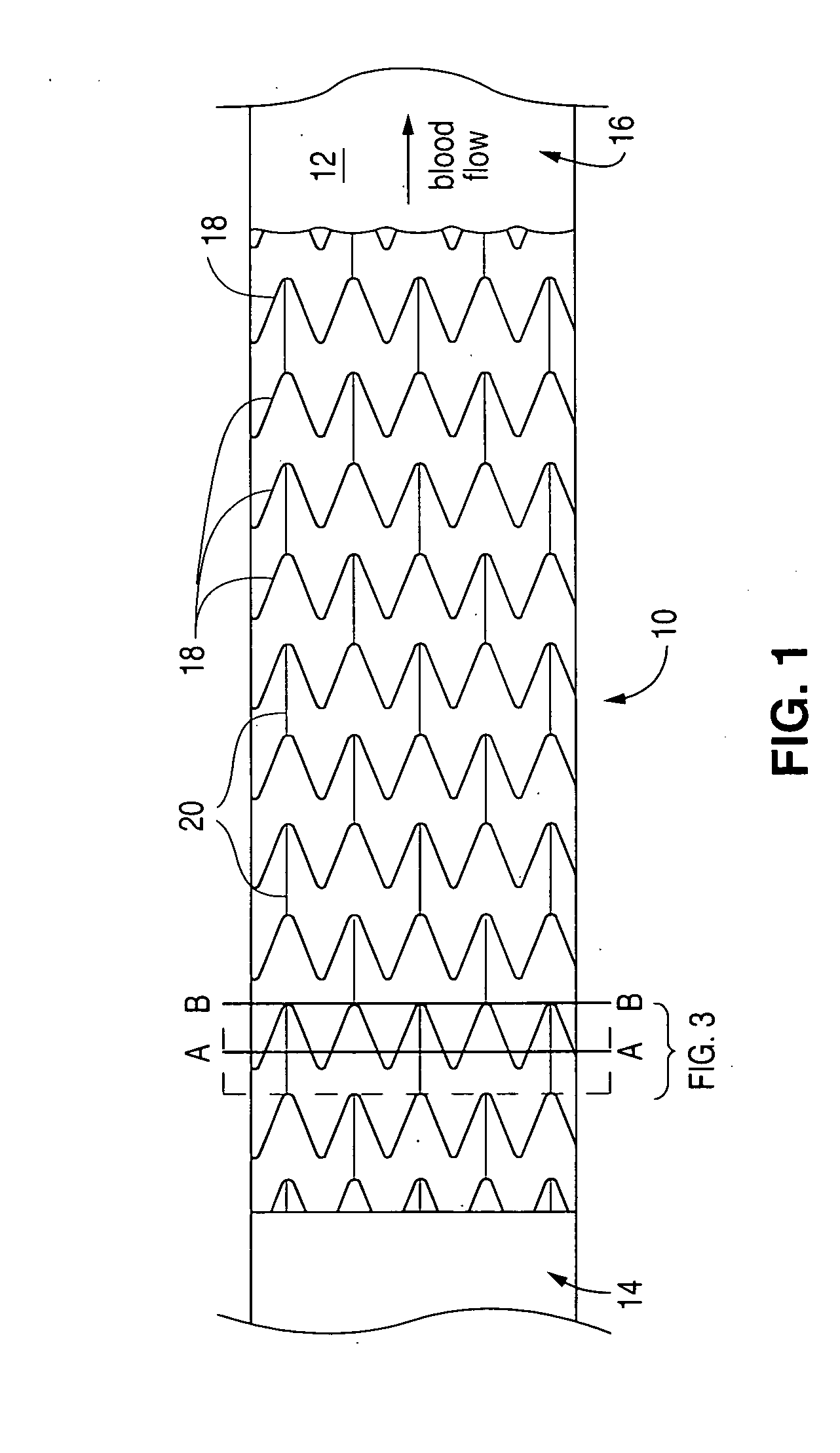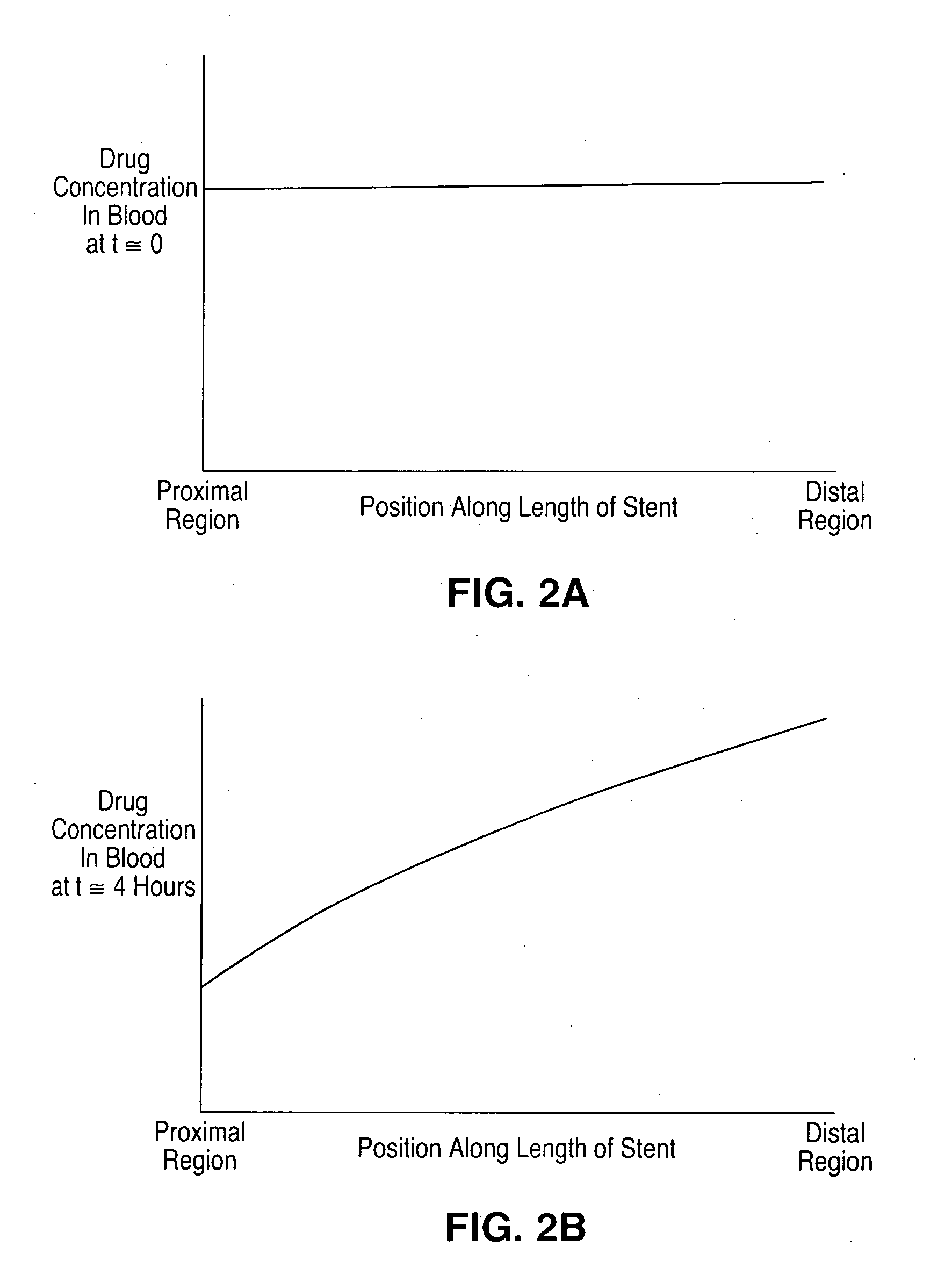Stent with drug coating
a technology of stents and coatings, applied in the field of implantable devices, can solve the problems of occlusion of conduits, threatening vessel closure, and intimal flaps or torn arterial linings
- Summary
- Abstract
- Description
- Claims
- Application Information
AI Technical Summary
Benefits of technology
Problems solved by technology
Method used
Image
Examples
Embodiment Construction
Variable Drug Concentration or Release Rate Along the Length of the Stent
[0028] The present invention is directed to a stent with a polymeric drug coating having a variable drug concentration or release rate along the length of the stent. Referring to FIG. 4, for example, a stent 40 coated with a polymeric drug coating can have a first segment 42, a second segment 44 and a third segment 46 along the length of stent 40, disposed between a first end 48 and a second end 50. In an embodiment of the present invention, the drug concentration in the coating gradually or incrementally increases along the length of stent 40 from first end 48 to second end 50. FIG. 5, for example, graphically illustrates a drug concentration in a coating that gradually increases along the length of a stent from the distal end of stent 40 to the proximal end of stent 40. The increase of the drug concentration can also be graphically illustrated to be linear or stepwise / incremental. In another embodiment of th...
PUM
 Login to View More
Login to View More Abstract
Description
Claims
Application Information
 Login to View More
Login to View More - R&D
- Intellectual Property
- Life Sciences
- Materials
- Tech Scout
- Unparalleled Data Quality
- Higher Quality Content
- 60% Fewer Hallucinations
Browse by: Latest US Patents, China's latest patents, Technical Efficacy Thesaurus, Application Domain, Technology Topic, Popular Technical Reports.
© 2025 PatSnap. All rights reserved.Legal|Privacy policy|Modern Slavery Act Transparency Statement|Sitemap|About US| Contact US: help@patsnap.com



